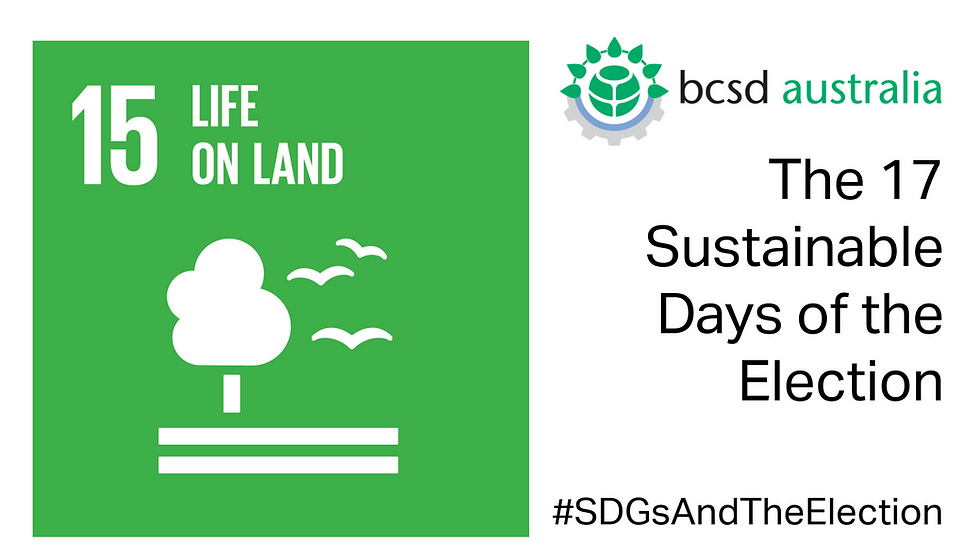SDG10: The 17 Sustainable Days of the Election
- BCSD Australia
- May 10, 2019
- 2 min read
Updated: May 27, 2019
Through the lens of the UN Sustainable Development Goals (SDGs), over the 17 days leading up to the Australia’s national election we will be highlighting the challenge for an inclusive and sustainable Australia, what can be done to address the challenge and what BCSD Australia, as part of a global WBCSD network is doing to create impact.
On Day 10, we are looking at SDG10: Reduced inequalities

Under any theory of ethics, it is unfair for one generation to adopt (economic, social or environmental) policies that leave the next generations worse off at a similar age, sex, disability, race, ethnicity, origin, religion or economic or other status, especially when they have no say in those policies.
The inequality that results has an economic cost. OECD modeling shows that a 1% increase in a nation's inequality lowers its grow domestic product by between 0.6% and 1.1%. While Australia’s income and wealth inequality are not particularly high, with the Gini index (a common measure of inequality) remaining constant between 200 – 2015, there is clear room for improvement. The level of income inequality in Australia is about average for the OECD. Another measure of income inequality, the Palma ratio, reveals that the incomes of the top 10% grew faster than the incomes of the bottom 40%. Without concerted efforts, gender, racial, inter-generational (rising house prices worsening wealth inequality) and locational (inequality of wealth and suburb-based segregation) inequality will increase.
What can be done now to reduce the risk of the next Australian generation being less well-off?
As reported in the SDSN Transforming Australia Report (2018), there is a gap in statistical data to assess Australia's progress in achieving Target 10.2, the target which determines that we empower and promote the social, economic and political inclusion of all, irrespective of age, sex, disability, race, ethnicity, origin, religion or economic or other status by 2030. Establishing indicators relevant to this target would be a baseline step in acknowledging and reducing the inequalities experienced by these marginalised groups to help drive structural and behavioural social change.
Increasing the rate of Newstart would assist in reducing the gap in living standards.
Moving beyond modest experimentation on Indigenous recognition to develop a progressive process towards Voice, Treaty and Truth following the Uluru Statement from the Heart.
Removing disincentives for women to take up more paid work is good for economic growth and promotes gender equality.
What is BCSD Australia doing to create impact to address these challenges?
We are working with a number of partner organisations on projects that will help to address this challenge here in Australia and around the world, including:
Follow us on Twitter and LinkedIn to see our latest posts on #SDGsAndTheElection each day.




Comments